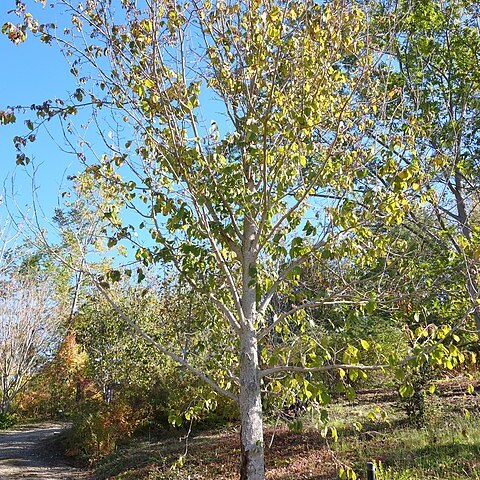Shrubs or small trees to 7 m tall; trunk to 10 cm d.b.h.; bark dark gray, fissured. Branchlets purplish brown or brown, densely tawny tomentose, stipitate glandular, glabrescent, with scattered, white lenticels. Petiole 7-12(-22) mm, densely tomentose, sparsely stipitate glandular; leaf blade ovate-orbicular to broadly ovate or obovate, 4-12 × 3-9 cm, papery, abaxially stipitate glandular when young, densely tomentose, adaxially sparsely pubescent especially along veins, base cordate, margin irregularly and doubly serrate, apex abruptly acuminate from suborbicular, apical portion of leaf; lateral veins 5-7 on each side of midvein. Male inflorescences 2 or 3 in a cluster, pendulous, cylindric, 2.5-3 cm; bracts ovate, densely gray tomentose. Female flowers 2 or 3 in a cluster; peduncle ca. 1 cm, tomentose; bracts campanulate, 1.3-2 cm, striate, densely yellow or gray tomentose, stipitate glandular, with triangular lobes. Nut ovoid-globose, 1.5-2 cm in diam., densely tomentose. Fl. May-Jul, fr. Jul-Sep.
More
A shrub or small tree. It grows 7 m high. The trunk is 10 cm across. The bark is dark grey and cracked. The young branches are a purplish brown. The leaves are broadly oval and 4-12 cm long by 3-9 cm wide. They are papery. The male and female flowers are in separate clusters of 2-3. The nut can be 2 cm across.
Deciduous broadleaved forests or thickets on mountain slopes; at elevations from 1,600-3,700 metres.
More
It is a subtropical plant. It grows in China on mountain slopes between 1,600-3,700 m altitude.
Can be grown by seedlings. Seeds needs soaking.


